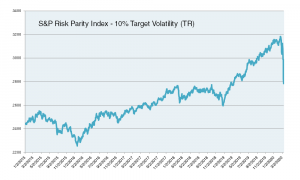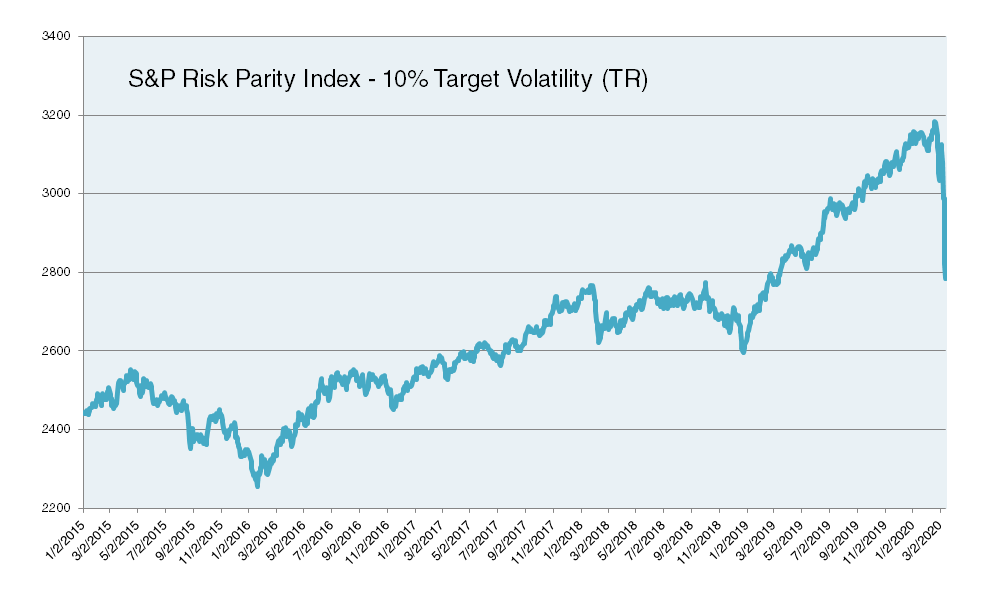
Institutional Investors Find Little Love in Risk Parity During Coronavirus Crisis
Posted on 03/14/2020
U.S. pensions and some sovereign funds were sold on the idea of risk parity. Risk parity funds performed terribly in March as the market slammed both equities and low-risk or “risk-free” U.S. Treasury bonds. The volatility surge in financial markets acted as a catalyst to force selling across all asset classes in risk parity funds. These assets include government and corporate bonds, listed equities, and commodities. In essence, the risk parity approach to asset allocation seeks to balance the allocation of risk across three major risk sources: equity risk, fixed income risk, and inflation risk.
According to S&P Dow Jones indices, “The S&P Risk Parity Index – 10% Target Volatility seeks to measure the performance of a multi-asset risk parity strategy that allocates risk equally among equity, fixed income, and commodities futures contracts, while targeting a volatility level of 10%.”
S&P Risk Parity Index – 10% Target Volatility

Source: S&P Dow Jones indices.
